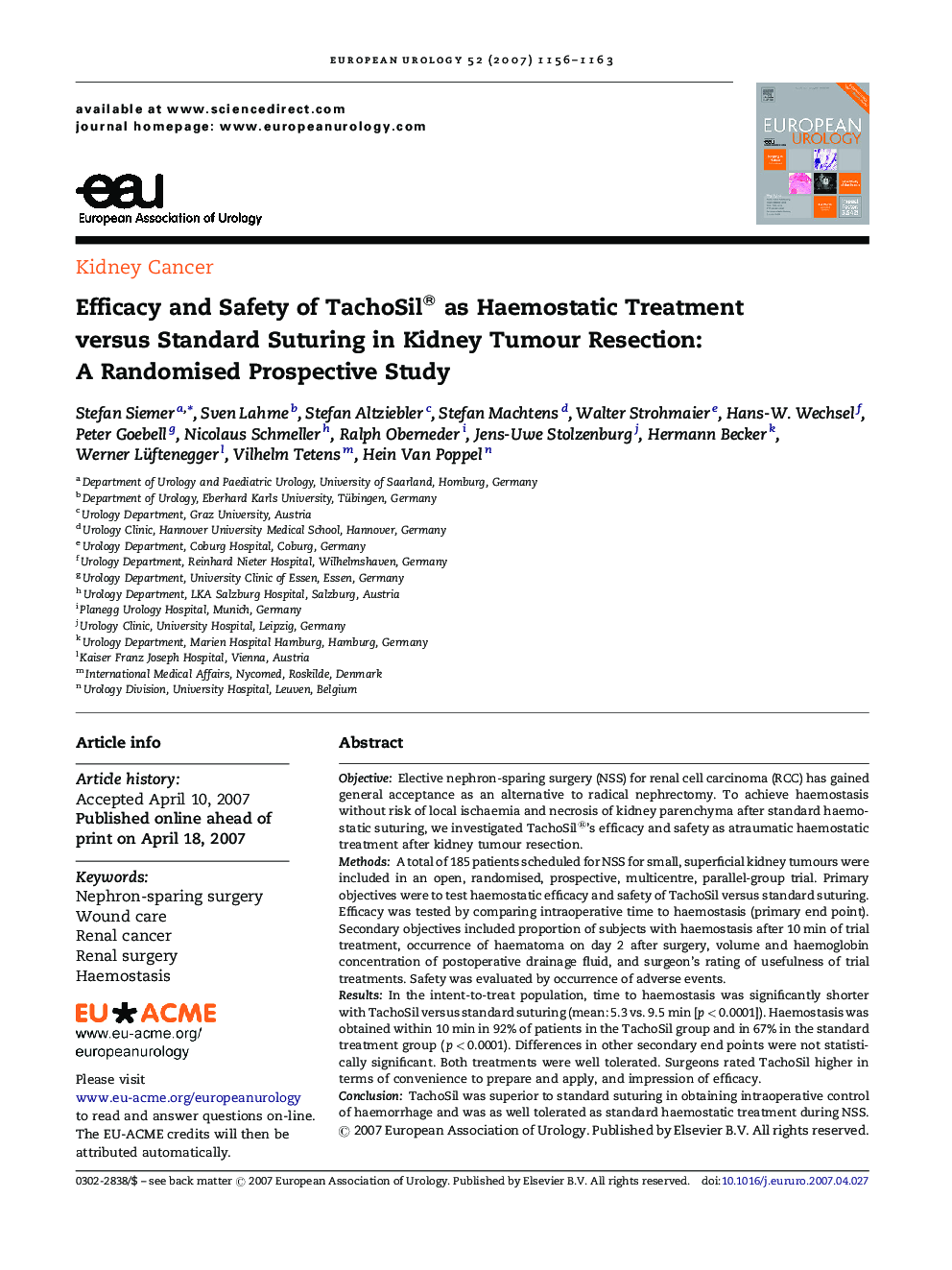| Article ID | Journal | Published Year | Pages | File Type |
|---|---|---|---|---|
| 3923363 | European Urology | 2007 | 8 Pages |
ObjectiveElective nephron-sparing surgery (NSS) for renal cell carcinoma (RCC) has gained general acceptance as an alternative to radical nephrectomy. To achieve haemostasis without risk of local ischaemia and necrosis of kidney parenchyma after standard haemostatic suturing, we investigated TachoSil®'s efficacy and safety as atraumatic haemostatic treatment after kidney tumour resection.MethodsA total of 185 patients scheduled for NSS for small, superficial kidney tumours were included in an open, randomised, prospective, multicentre, parallel-group trial. Primary objectives were to test haemostatic efficacy and safety of TachoSil versus standard suturing. Efficacy was tested by comparing intraoperative time to haemostasis (primary end point). Secondary objectives included proportion of subjects with haemostasis after 10 min of trial treatment, occurrence of haematoma on day 2 after surgery, volume and haemoglobin concentration of postoperative drainage fluid, and surgeon's rating of usefulness of trial treatments. Safety was evaluated by occurrence of adverse events.ResultsIn the intent-to-treat population, time to haemostasis was significantly shorter with TachoSil versus standard suturing (mean: 5.3 vs. 9.5 min [p < 0.0001]). Haemostasis was obtained within 10 min in 92% of patients in the TachoSil group and in 67% in the standard treatment group (p < 0.0001). Differences in other secondary end points were not statistically significant. Both treatments were well tolerated. Surgeons rated TachoSil higher in terms of convenience to prepare and apply, and impression of efficacy.ConclusionTachoSil was superior to standard suturing in obtaining intraoperative control of haemorrhage and was as well tolerated as standard haemostatic treatment during NSS.
